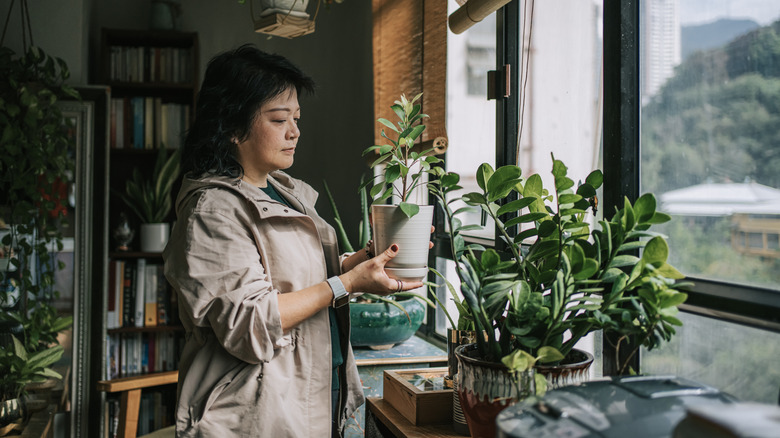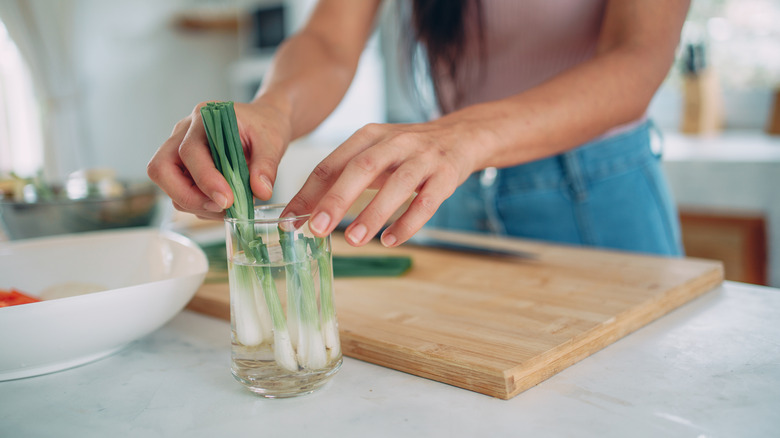The Popular Bunching Onion Variety You Can Actually Grow Indoors (And Here's How)
Gardening isn't just an outdoor hobby. Not only can gardening indoors offer your plants a controlled environment no matter the season, but it could also help you through benefits like improved air quality. Plus, when you grow edible plants indoors, like onions, you can have fresh produce at the ready. Before you jump into indoor onion farming, there is one caveat to be aware of: not all onions do well indoors. While all onions require full sun – which can be difficult to achieve indoors without the use of a grow light – some have needs that don't mesh well with an indoor growing environment. Fortunately, that doesn't mean that it's impossible to add onions to your indoor garden; you just need to choose the perfect plants to grow indoors – such as scallions (Allium fistulosum).
Scallions are also known as green or bunching onions, and so long as you provide them with the light they need, they grow well indoors thanks to their preferred temperature and growing habits. They're fairly low-maintenance and easy to grow, which makes them a good choice for beginner gardeners looking to diversify their plant collection, and you can harvest them in as little as 60 days. One bonus: You can grow scallions from kitchen scraps, saving you the hassle of finding seeds. Whether you start from seed or scraps, proper care is essential for the best indoor results.
How to grow scallions indoors
Growing scallions indoors can be quite a different process from growing them outdoors. While you won't need to consider factors like hardiness zones, you'll need to consider features like temperature and sunlight. On the bright side, scallions grow their best when the temperature is between 68 and 78 degrees Fahrenheit, making them well-suited for indoor gardening.
Sunlight is often the trickiest part of growing any full-sun plant indoors. When growing scallions indoors, you'll need to balance direct light from a bright window with protection from cold drafts. If you're relying on windows alone for your scallion plant, opt for a south-facing window. In the northern hemisphere, windows that face the south receive the most amount of sunlight, helping to keep your scallions healthy and happy. This is the opposite in the southern hemisphere, where north-facing windows provide optimal lighting. Even with a south-facing window offering direct light versus indirect light, you may still want to invest in a high-quality grow light for the best results. After all, they need at least six hours of sunlight each day, and even the perfect window may not be able to provide that.
When growing scallions indoors, you can start them either from seed or by reusing kitchen scraps. Starting with scraps is unique to indoor growing, and while transplanting later is possible, it's often easiest to keep them inside at first. This is because scrap-grown scallions begin in a dish of water that needs frequent changing, while still meeting light and temperature needs. Once you master these basics, you'll always have crisp, homegrown scallions ready to snip whenever you need.

